Software and Online ToolsSPICE_MARSM. Sadaf Monjur, Faruque Hasan SPICE_MARS stands for Synthesis and Process Intensification of Chemical Enterprises involving Membrane-Assisted Reactive Separations. It is a software prototype for the conceptual design, simulation, synthesis and optimization of membrane reactor based processes. At the conceptual design stage, it can be used to determine whether MR-based process intensification is favorable or not. If MR is favorable then, it can automatically decide on species to be separated and type of suitable respective membranes. The framework can also be used to perform rigorous simulation of MR to compute sensitivity analysis, techno-economic analysis (TEA), and life cycle assessment (LCA). At the synthesis level, SPICE_MARS can select appropriate MR configurations in terms of counter-current, co-current or cross-current flows in the permeate and retentate sides; reactor lengths; membrane areas; and catalyst amounts. Finally, it can be used for property-performance mapping to map the most desired properties of novel membranes for intensification purposes. Contact Dr. Faruque Hasan (Email) for more on SPICE_MARS and use.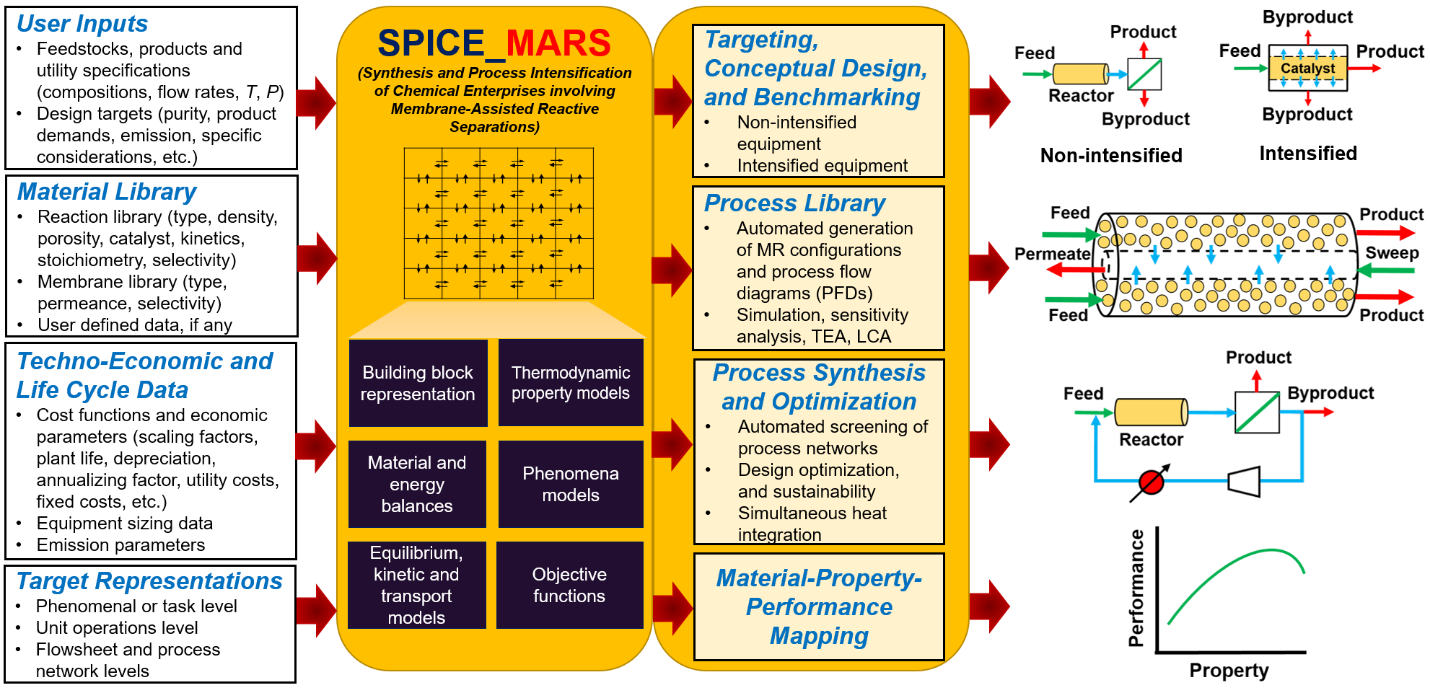 Reference:
Reference:
SPICEHasan, Li, Demirel SPICE Home PageSPICE is a process intensification (PI) toolbox. SPICE stands for Systematic Process Intensification of Chemical Enterprises. SPICE automates the generation and optimization of process flowsheets including intensified alternatives without postulating their existence a priori. This generates intensified process flowsheets with improved performance, allows innovation in process design, and brings technical innovation with operational excellence, sustainability and energy efficiency. 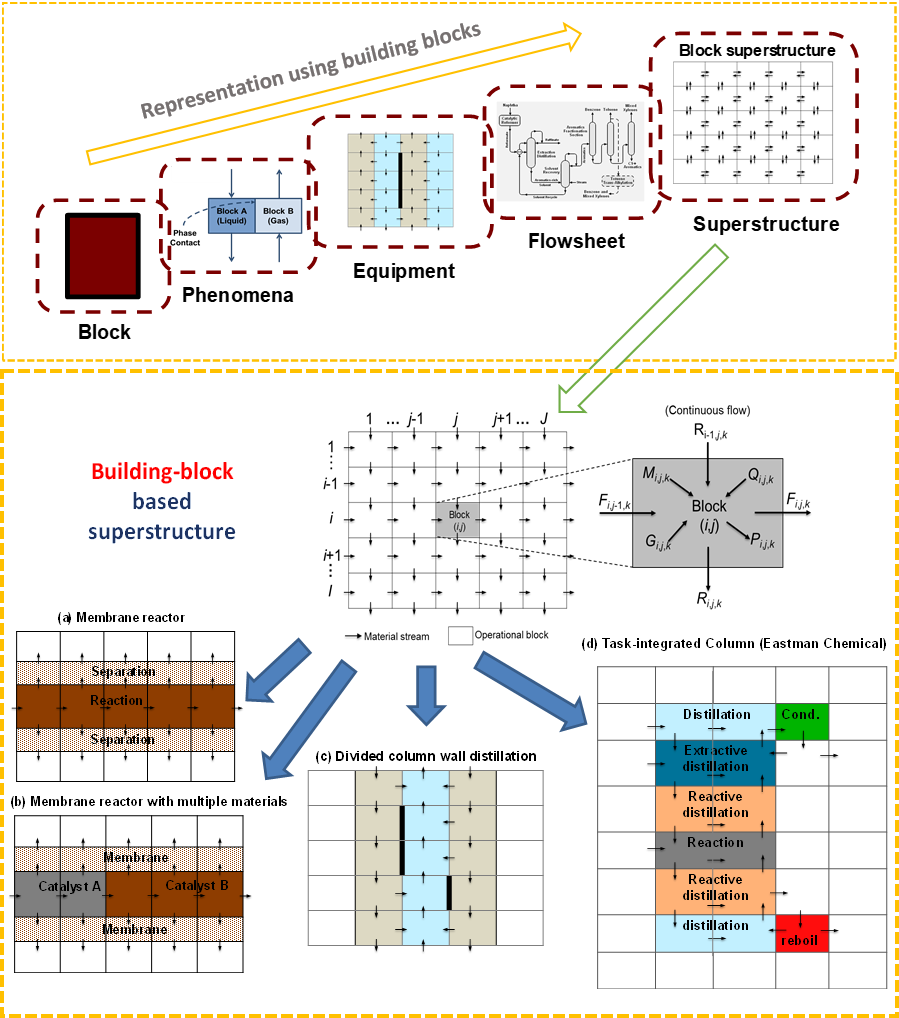
THESEUSHasan, Gandhi, Zantye THESEUS Home PageTHESEUS stands for TecHno-Economic framework for Systematic Energy Storage Utilization and downSelection which is a framework designed to identify cost efficient energy storage technologies for (i) power plant model parameters, (ii) a given demand profile and (iii) region-specific parameters such as cost of electricity, carbon tax, etc. The software prototype for THESEUS can generate optimal design and scheduling solutions for energy storage systems with flexible carbon capture. Individual storage technologies are developed in detail and surrogate models with high accuracy are used in the framework. Overall, 9 storage technologies along with flexible carbon capture are integrated for the downselection problem. The optimization model provides solution of sizing of individual technologies for power and storage capacity to minimize cost along with optimal charging and discharging schedule for each technology. The flexibility of the general formulation is demonstrated by its capability to handle multiple storage technologies along with flexible carbon capture. The software prototype can be used for obtaining the design and scheduling solution with a minimized levelized cost of storage (LCOS) and the absorption and desorption schedule for the carbon capture plant. 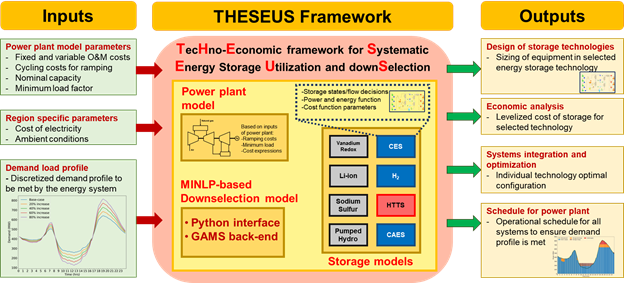
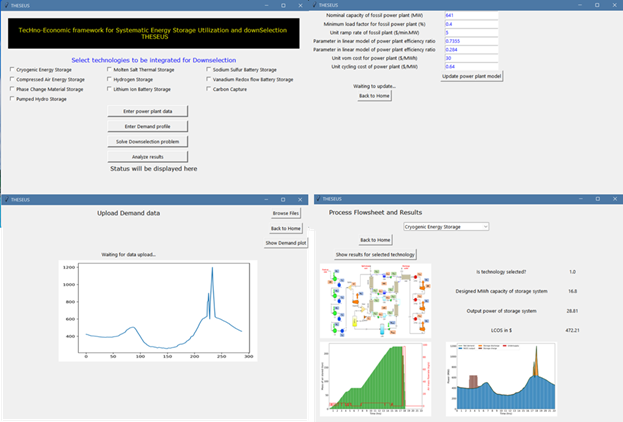
UNIPOPTBajaj, Hasan UNIPOPT Home PageUNIPOPT is a derivative-free optimization (DFO) algorithm that solves complex optimization problems using input-output data or samples. Many important problems in engineering, biology, materials science, physics and chemistry fall in the category of DFO. While there exists several excellent DFO solvers, many suffer from three key challenges: (1) curse of dimensionality, (2) unknown solution quality due to black-box objective function, and (3) unknown feasible region due to black-box constraints. DFO methods require large number of samples to solve high-dimensional problems. Often they fail to locate any solution (local or global) when the dimension is ten or more. UNIPOPT (UNIvariate Projection-based OPTimization) is based on projecting all the samples onto an auxiliary univariate space. We have tested this method over many test problems from several libraries. GRAMSArora, Iyer, Hasan GRAMS Home PageGRAMS (Generalized Reaction-Adsorption Modeling and Simulation) platform captures both reaction and adsorption dynamics in columns with solid catalysts, porous adsorbents or both. It is based on a one-dimensional, pseudo-homogeneous, non-isothermal, non-adiabatic and non-isobaric model that is extensively validated using experimental data from literature for different adsorption-reaction systems. Using GRAMS, both simulation and optimization can be performed for a wide range of configurations of a packed columns containing pure catalyst as in a fixed bed reactor, pure adsorbent as in a multi-step pressure swing adsorption (PSA) process, homogeneously-distributed uniform mixture of adsorbent and catalyst as in a cyclic sorption enhanced reaction process (SERP), or heterogeneously-compartmentalized adsorbent and catalyst as in a layered SERP. 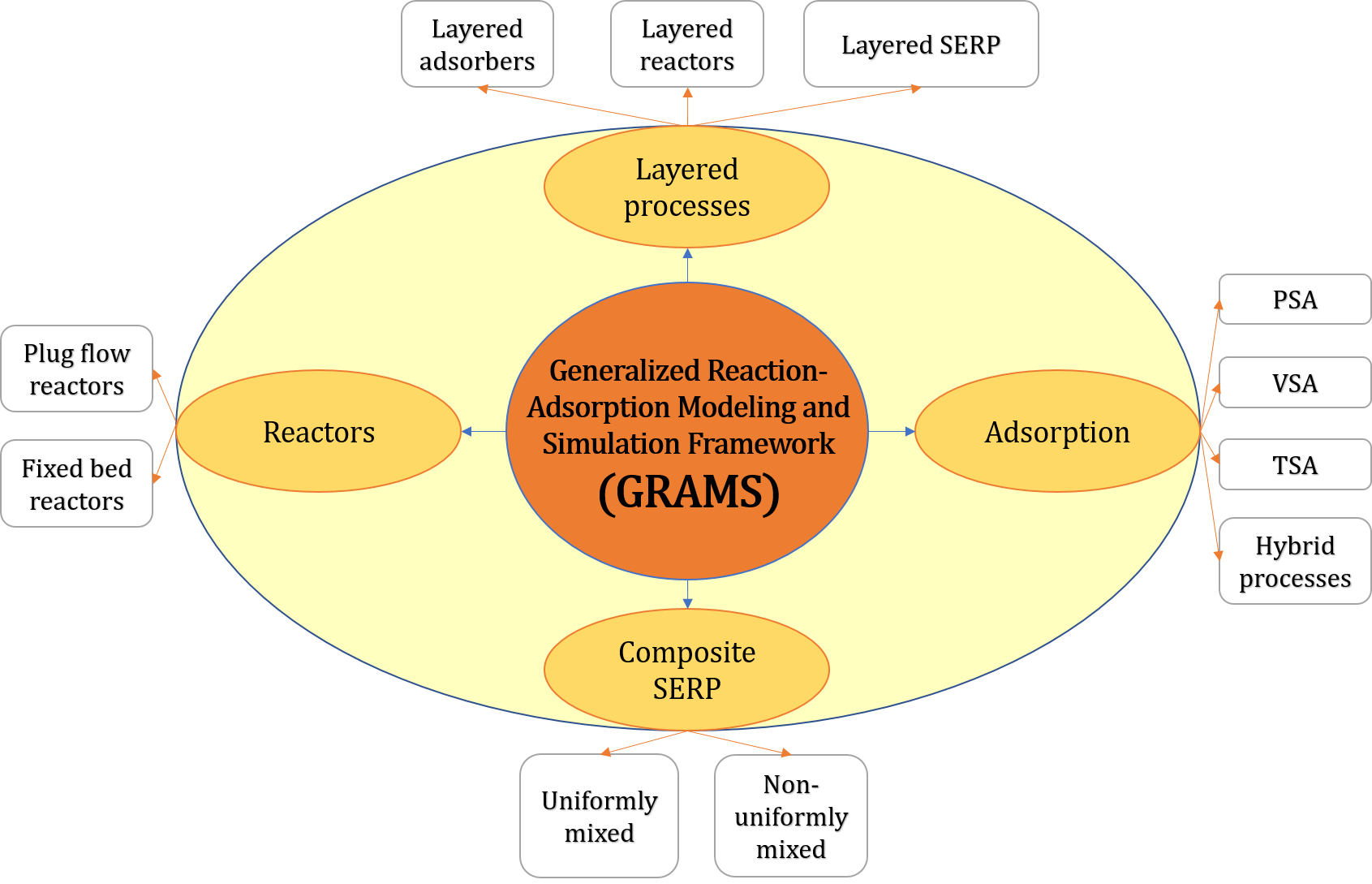
|